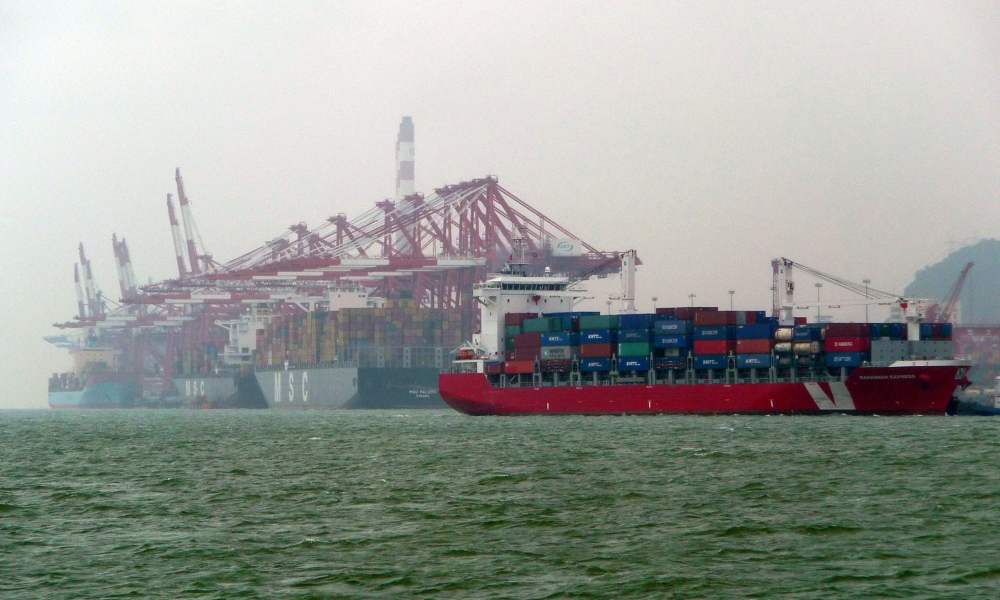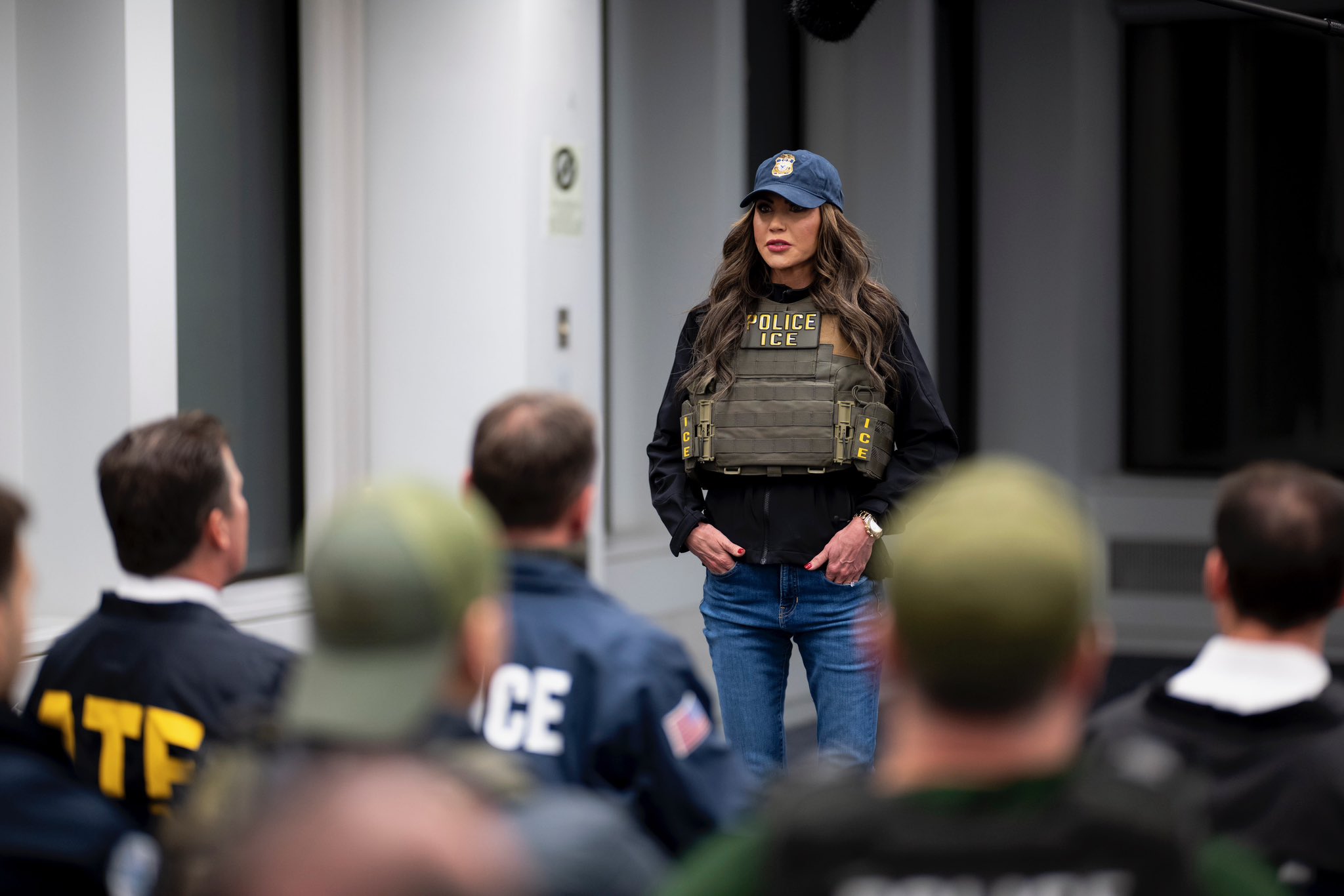America Needs a Single Integrated Operational Plan for Economic Conflict With China

Published by The Lawfare Institute
in Cooperation With

Editor’s Note: If China escalates pressure on Taiwan, the United States might enact economic punishments—and China, in turn, might respond in kind, creating a devastating nonmilitary struggle. The Massachusetts Institute of Technology’s George Gilboy and Eric Heginbotham relate their findings from a recent wargame they conducted and argue that while China would suffer more than the United States and its allies from an escalated economic conflict, Washington can take steps now to better prepare for any such struggle.
Daniel Byman
***
Military-focused wargames of a potential U.S.-China conflict over Taiwan have captured media headlines and policy attention. Much less attention has been given to the potential effects of economic conflict over Taiwan, or mixed scenarios involving a combination of military and economic pressure. A recent political-economic crisis simulation convened by the MIT Security Studies Program—conducted by economists, former economic policymakers, business leaders, and regional experts, and observed by representatives of the U.S. government—highlighted the risks of such a scenario.
Like all wargames, the results of this economic conflict simulation represent only one potential set of outcomes. However, the MIT crisis exercise generated a number of potentially useful insights. First, economic coercion could escalate rapidly and in unexpected directions. Second, although there would be no “winners” and U.S. partners and allies would also suffer consequences, China’s economy would likely fare substantially worse than America’s. This likelihood may contribute to deterrence, but not guarantee it.
And third, the United States, its allies, and Taiwan would benefit greatly from prior contingency planning. The U.S. policy community’s recent focus on military planning has not been matched by preparation for economic aggression. The United States needs a single integrated operational plan (SIOP) for economic conflict, with principles similar to the nuclear SIOP that underpinned strategic deterrence for many years. Like that earlier plan, a SIOP for economic conflict would enable planning and exercises, help coordinate policy and allies, and reduce the likelihood of actual conflict.
Uncertainty, Escalation, and Unanticipated Consequences
The exercise, conducted at MIT in June 2023, was one of the first, most detailed, and largest of its kind. Participants examined how the United States, its allies, and Taiwan could employ economic statecraft to respond to a crisis over Taiwan.
Teams were given a scenario: The year is 2025, and Taiwan has elected as president a candidate advocating a “separate identity.” In response, Beijing has initiated military exercises near Taiwan’s ports and launched policies to disrupt Taiwan’s economy, including imposing customs rules and processes on Taiwan’s trade. The U.S. president has directed his advisers to prepare economic responses but avoid military conflict. Participants in the exercise then made three moves, each representing one year, that were then adjudicated by a control team.
The exercise highlighted the strong possibility that communication miscues and conflict escalation—common themes in political-military crises—may bedevil policymakers engaged in techno-economic conflict. Defensive moves were taken by other teams as offensive, tit-for-tat responses led to spiraling and escalation, and carrots were overlooked while sticks took on outsized dimensions.
The first insight from the simulation is that escalation emerged quickly. In the opening phase, set in 2025, the U.S. revised tariffs on Chinese goods to punish China’s high-tech sectors and expanded financial sanctions. The People’s Republic of China (PRC), meanwhile, retaliated by restricting exports of industrial inputs and certain commodities to the United States and its allies, including chemical precursors necessary for the pharmaceutical industry.
Beijing sold U.S. financial assets—which perhaps was intended as a defensive measure but contributed to a sense that China was on offense. U.S. allies, for their part, did not recognize the PRC customs regime but initially did not join U.S. sanctions.
During the second year, 2026, the tit-for-tat policies spread across industrial sectors. The United States froze some PRC bank assets, imposed export controls on high-tech components and services, and organized its allies to halt foreign direct investment to China. China responded by increasing domestic fiscal stimulus and working with partners, including India and Russia, to circumvent sanctions.
Then, China overreached. Beijing attempted to offer a carrot to Europe in the form of trade incentives while implying a stick—that it might support Moscow’s war in Ukraine. In the minds of the target audience, the carrot was vastly overshadowed by the threat of the stick, and Europe increased its support for Taiwan. Tokyo also stepped up; it employed its coast guard to escort its vessels sailing to Taiwan and banned exports of high-tech equipment to China.
In 2027, Beijing offered an off-ramp to the conflict. This proposal entailed some symbolic loss of sovereignty for Taiwan with a demand that Taipei submit detailed customs data to Beijing. But China also considered even greater export restrictions that would have deeply harmed its adversaries at the risk of shutting down a much greater share of China’s own economy—a “murder-suicide package” in the words of one participant.
The United States and its allies also prepared further and riskier measures. The coalition backed the use of military escorts for shipments to Taiwan in the event that Chinese sanctions and the customs regime continued. At the end of the 2027 turn, it was unclear whether the economic conflict would escalate to a more militarized one or whether Taipei would concede instead.
No Winners, but China the Biggest Loser
A second takeaway from the exercise is that all parties would face high costs but that those costs and risks would likely be higher for China than for the United States and its allies, though Taiwan would suffer tremendously. By the end of the third year of the simulation, MIT macroeconomic modeling indicated that the global economy had lost about $4.3 trillion (in constant 2015 U.S. dollars), about 4 percent off of its preconflict projected value for 2027.
Taiwan suffered devastating losses, with GDP declining 7 percent in the first year, 14 percent in the second year, and 11 percent in the third. In all, Taiwan’s economy was 32 percent smaller than the preconflict outlook for GDP in 2027.
From the start, China suffered losses that were larger than those of the United States and its partners (other than Taiwan). By the end of the third year, Chinese GDP was 11 percent (or $2.2 trillion) lower than it would have been absent the crisis. The U.S. economy for its part was 4 percent (or $905 billion) lower than preconflict projections.
Perhaps more importantly, the gap in the relative damage suffered by China and the United States was considerably greater in the second year than in the first. After the first year, the Chinese team found itself short of new ways to escalate pressure on the United States without inflicting equal or greater damage on its own economy. U.S. policymakers, by contrast, were able not only to find new means of leverage but also to amplify the effects of sanctions by enlisting allies and partners.
By the end of the exercise, economic losses had sparked social and political instabilities in all of the major participant countries—something that would be particularly worrisome to China’s leaders.
Preparing for Economic Conflict
A third key lesson from the crisis simulation is that without credible and effective U.S. and allied options to deter or respond to Chinese economic coercion, Beijing could potentially force Taipei into concessions or even capitulation. A number of implications for U.S. policy emerged.
Study the Potential Costs and Course of Conflict
The problem of potential Chinese economic coercion against Taiwan is under-examined. More study and simulation will help. New wargames and studies are tackling the problems posed by a potential blockade of Taiwan by China, but the nonmilitary aspects of trade and financial conflict require equal attention.
Strengthen Economic Resilience and Alignment
The United States, Taiwan, and America’s allies all need to improve the resilience of their economies, financial systems, and technology supply chains. But in a conflict, near-term access to energy, commodities, shipping, trade credit and insurance, basic industrial materials, and even food will likely be important to the United States, China, and, especially, Taiwan. In the simulation, the U.S. team was caught off guard by the interruption of basic materials from China, such as chemicals and industrial materials. Taiwan quickly began to suffer economic, social, and (eventually) political instability as access to energy and food was slowed or interrupted. China also suffered from reduced access to and higher cost of lower tech resources, and midway through the simulation the China team was concerned about the effect of losses on domestic social and political stability.
Improve Coordination With the Private Sector and Allies
The simulation revealed a clear divide between those industries that have already diversified supply chains to balance risks from exposure to China (such as commercial aircraft manufacturing) and those that have yet to do so (such as the pharmaceutical and renewable energy industries). Despite the initial costs and challenges of doing so, those industries that have not yet diversified their supply chains should consider the risks they would face in a crisis.
Plan for Carrots, Not Just Sticks
The United States has many advantages relative to China in an economic conflict. These include financial system depth and adaptability, and relative energy independence. But America’s most important techno-economic asset is similar to its most important political-military asset: its constellation of powerful allies that share political values and economic interests with Washington. One of the most effective U.S. moves in the exercise came when the U.S. team shifted policy focus toward enhanced trade and investment opportunities for allies, even as it continued to build consensus around expanding sanctions. The potential for renewed focus on economic incentives, not just sanctions, is also important for conflict termination strategies.
Plan Ahead for Sanctions by Creating an Economic Conflict SIOP
The crisis simulation confirmed a key element of deterrence theory: Gradualism and incrementalism undermine deterrent effects. The greatest effects would likely come from early and simultaneous application of heavy sanctions.
The ability to select the most effective sanctions early in a conflict will require advance planning and alignment, both within the U.S. government and with allies. Targets for sanctions should be clearly identified in advance to maximize their effects and minimize self-harm. Alignment and contingency planning should be coordinated between relevant U.S. government agencies and among America’s allies. A SIOP for sanctions would help the U.S. plan for—and practice through exercises—resisting economic coercion.
To enhance deterrence and stability, the United States and its allies should publicize and forewarn China of the potential trade and financial sanctions it could face if it implements economic coercion against Taiwan. Indirectly, these plans would prompt and assist private companies with their own supply chain diversification strategies.
Realistic Expectations
The MIT simulation results did not produce a simple assessment that coercive economic policies and economic sanctions “work,” “don’t work,” or “backfire.” Sanctions are not a substitute for military action, but they can contribute to deterrence, especially against a primarily economic attack. Perhaps most importantly, economic sanctions can erode an adversary’s relative economic power and military potential even when the goal of changing its behavior in the short term cannot be achieved. Applying these essential lessons and reaping the benefits of that deterrence, though, will require further planning. The more thoroughly the United States has considered its options and the potential contingencies, the better its performance will be in a real crisis.
Acknowledgments: The authors recognize and thank colleagues with whom they conducted the June 2023 MIT U.S.-China economic crisis simulation exercise, including Taylor Fravel, Erik Lin-Greenberg, and Chris Twomey. We also thank the many participants and observers, and the MIT graduate students who were essential in running the simulation.






